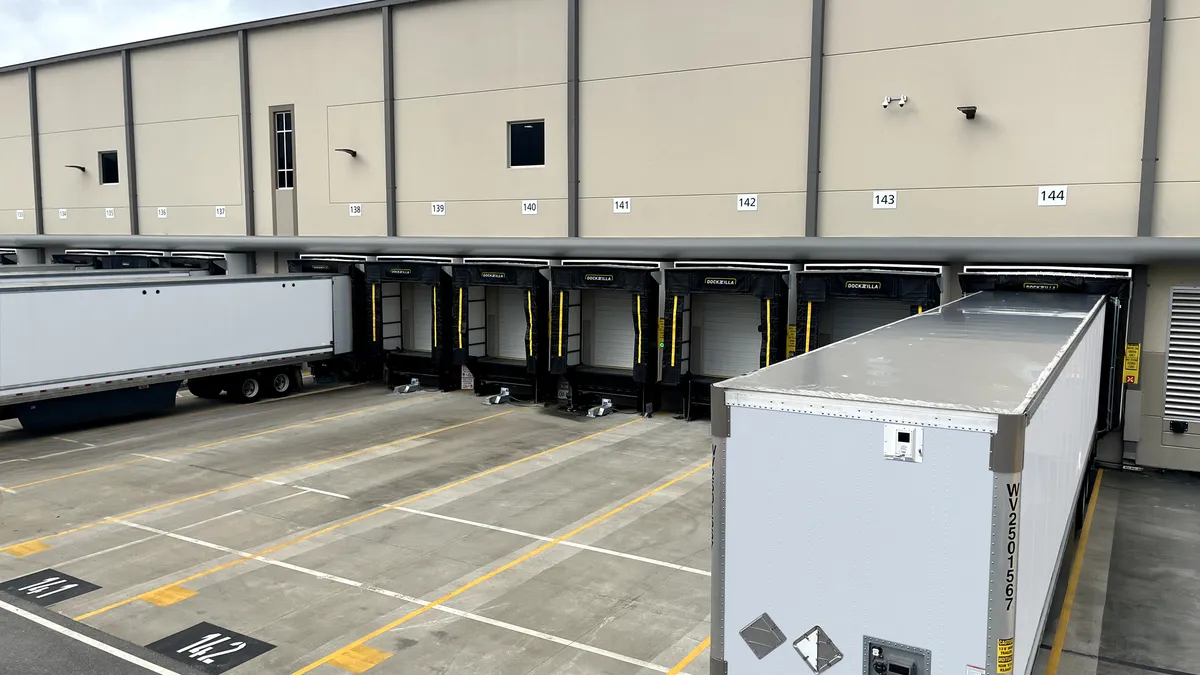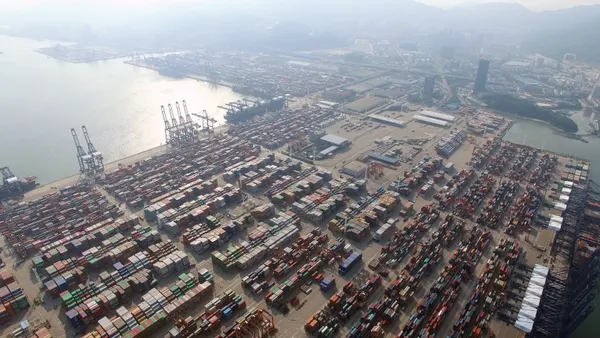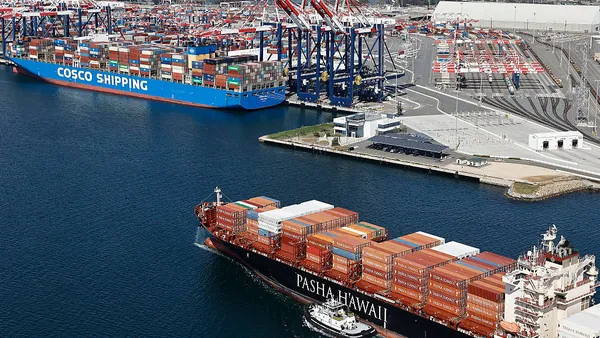Savvy companies — including Fortune 100 retail and logistics giants — have found a new way to handle freight and gain velocity at their loading docks. In a shift away from the status quo of clunky and conventional dock equipment offerings, they’re turning to a proven, modular solution to slash downtime and lost revenue, wasted warehouse space and worker turnover.
“But this is how we’ve always done it.”
Even as the supply chain landscape has changed drastically, the equipment that powers America’s 10 million loading docks has remained largely unchanged and uninspired. Loading docks can be an afterthought, and — whether it’s due to default or skepticism about alternatives — companies continue to make do with outdated offerings, such as pit-style levelers.
The problem with the status quo
Traditional methods can come with heavy costs in more ways than one. Putting in a pit leveler at a loading dock position means tons of planning, prep and coordinating construction trade schedules for substantial concrete work — such as jackhammering a 10-by-10-foot pit into the building floor, building a form, pouring concrete and waiting for it to cure. Embedding a dock leveler into the floor is an old-school approach that takes weeks or even months to complete. If there are multiple docks, that’s hundreds of cumulative weeks of downtime, disruption and lost productivity.
Structural Impacts
Modifying a building is no small matter. “Concrete work can pose unforeseen problems. You’re essentially sawing a building apart, changing its integrity — you could cut electrical lines, hit water mains, and even crack the foundation,” says Grant Leum, a structural engineer and the founder of Dockzilla, who embraced and refined the European modular Dock House concept and introduced this exterior leveler to U.S. companies.
Unusable Floorspace
The problems with pit levelers don’t end after installation. The equipment is inherently inefficient, commandeering approximately 100 square feet of floorspace per dock position, which is an issue for companies who need room to stage outgoing freight or every square inch of building floor for forklift traffic.
Temperature Control
An embedded dock plate creates gaps around the perimeter of the unit that allow outside air to seep into the building. This saddles companies with additional HVAC needs and higher energy costs and impacts worker comfort.
Hygienic Issues
Fixed position pit levelers don’t allow for cleaning underneath the unit, which means that pests and rodent infestations are likely, and that dust, debris and garbage will get trapped beneath the leveler.
Building Damage
Another issue with pit levelers: When trucks back up to the dock door, there’s no protection for the building. Over time, the repeated impacts can strain the building, leading to damage that could eventually weaken the structure.
Lack of Mobility
A pit leveler is also a permanent installation, so if businesses move, they leave that investment behind or pay substantial reclamation costs if required by their lease agreement.
Breaking free from traditional dock solutions
Modular dock levelers have gained momentum, especially with efficiency-focused Fortune 100 companies, who’ve turned to a new modular standard: Dockzilla’s Dock House Exterior Leveler, a self-supported steel structure that stands up the dock leveler on the exterior of the facility.
“The more we look at the drawbacks of permanent pit levelers embedded in a building floor, the more reasons we see for putting them outside,” Leum says. A Dock House Exterior Leveler can retrofit to any dock door. “Adding modular dock levelers is relatively simple — no structural change needed. Whether it’s a new facility or a mature warehouse, attaching a Dock House Exterior Leveler takes one day, without the disruption of concrete construction.”
Installing these high-strength steel structures is comparable in cost to pit leveler construction, delivers ROI from day one, is an investment that can be moved and doesn’t impact revenue by bringing the loading dock to a standstill during installation.

Even in buildings with existing pit levelers, a Dock House Exterior Leveler can be a simple replacement. “It’s a straightforward process to remove the pit leveler plate and fill the pit with concrete or cover it completely with a steel plate,” Leum explains. “You’re getting space back as well as making the building more comfortable, pest resistant and energy efficient.”
Dock House Exterior Levelers solve warehouse challenges across industries
This array of benefits has led a wide range of companies to adopt Dockzilla’s Dock House Exterior Leveler. For those with spec warehousing, the modularity is a big attraction. With manufacturing and warehousing, it’s the thermal benefits, leading to increased employee productivity and retention. For food, retail and pharmaceutical, it’s the end to worries about dirt and pests. For e-commerce businesses, it returns 100 square feet of wasted space.

“We’ve been installing Dock House Exterior Levelers for over a decade, and each customer has needed it for different reasons,” Leum says. “After learning about the unnecessary and destructive concrete work involved with pit levelers, an engineer for one client simply told us, ‘There’s got to be a better way and this is genius.’ Another had a five-year strategy where they put 50 Dock House Exterior Levelers in a manufacturing plant because they knew they’d want to expand and could easily remove and reinstall their dock leveler investment.”
Leum sees that the tide is changing from pit levelers to Dock House Exterior Levelers as the “go-to” loading dock equipment. “Here in the U.S., pit levelers have just become the norm. I really think that’s the only reason everybody isn’t using exterior dock levelers like ours, because it is absolutely the right answer.”









